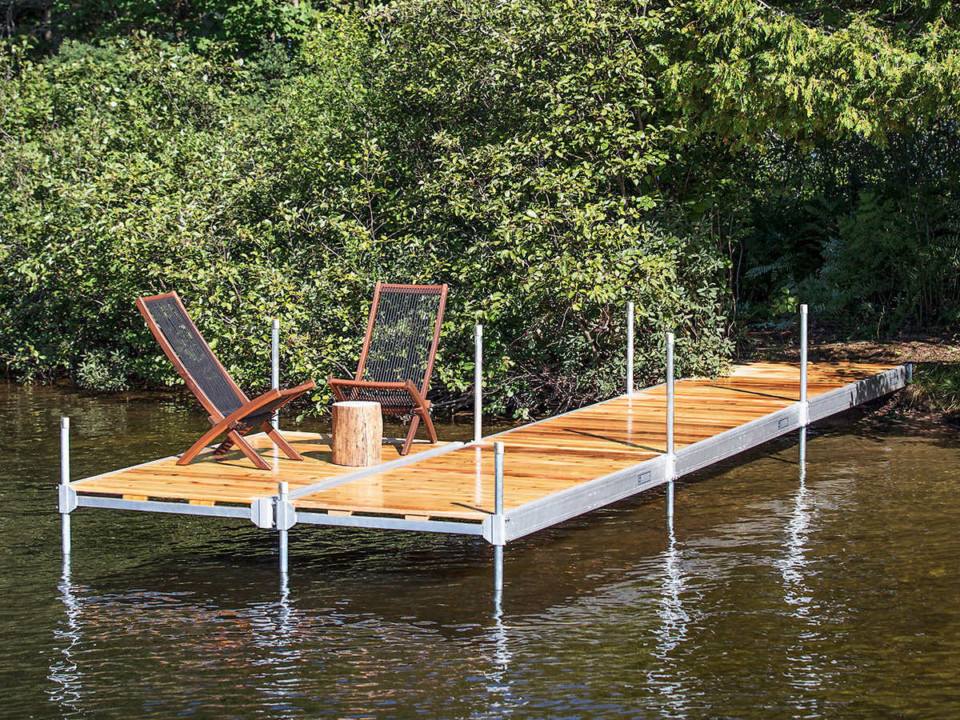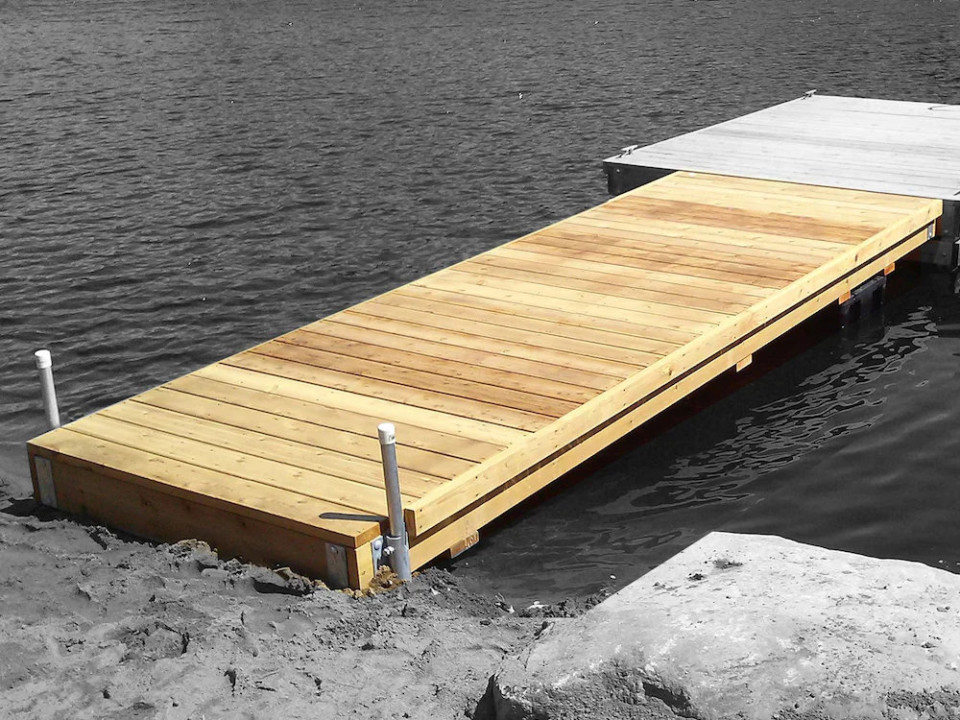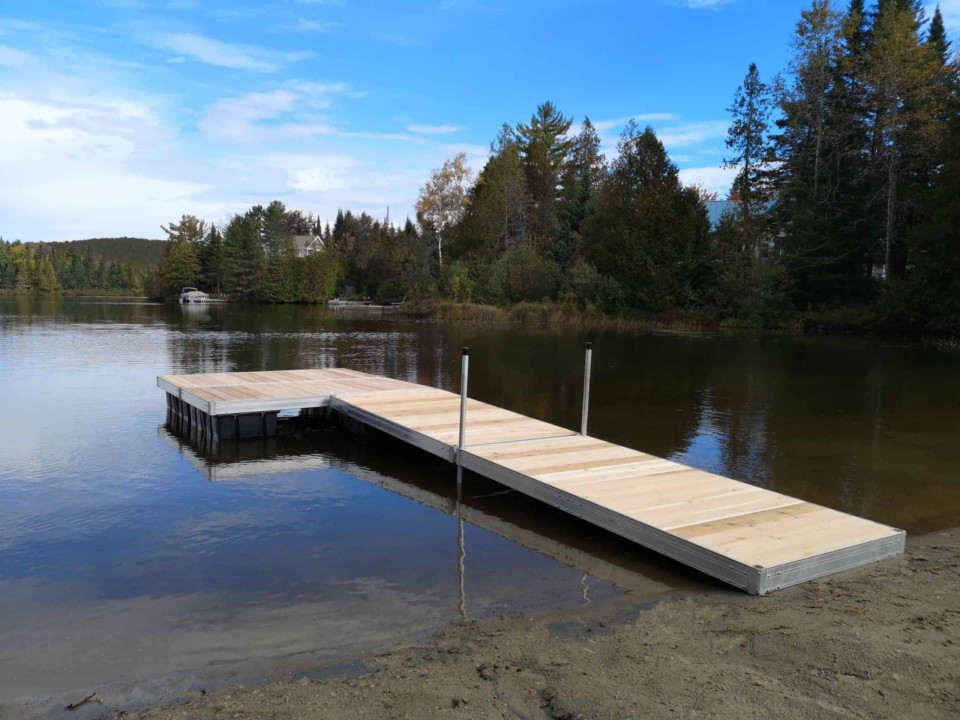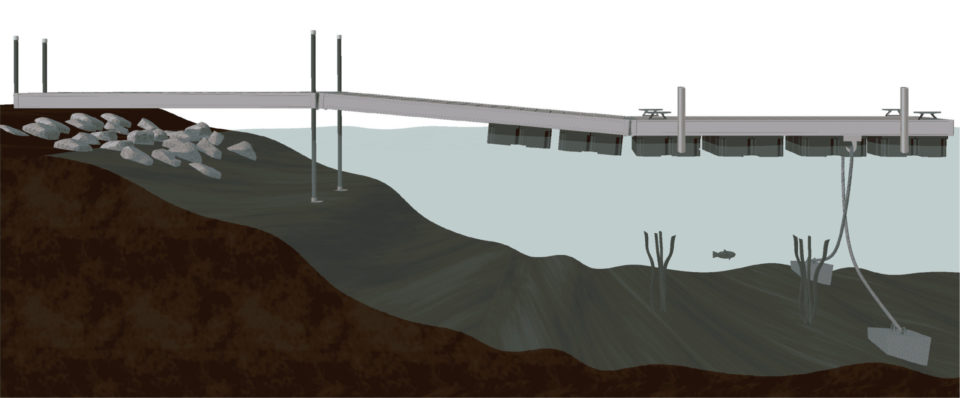How to choose your floating dock

Fixed or floating?
A good way to help you make the right choice of system is to look at those of your neighbors.
If their docks have been installed for a few years and maintain their good condition, a similar configuration choice might be good for you. If not, note the following characteristics to choose the best option for your body of water.

Fixed dock
- This is the ideal option for shallow waters. You can install a fixed dock in up to 4′ of water.
- A fixed dock is recommended if bad weather results in waves of up to 3′. If this is the case, you will need to moor the boat away from the dock.
- A stationary dock (or leg dock) is not recommended in a body of water that often fluctuates by more than 2′ in a short time. A floating dock would be more appropriate in this case, otherwise you might have to adjust the height a few times during the season.
- The fixed dock is usually without anchorage and you can’t rely on it to hold your boat during a storm or protect it from the big waves created by other boats.

Semi-floating dock
- A semi-floating dock is required in a floating dock configuration. It features floats at the end to allow for a transition that adjusts the height smoothly between the mainland or a fixed dock and the floating dock.
- In an area where water fluctuations are high, you can use fixed docks near the shore and make the transition to a floating dock in deeper waters. However, before the floating dock, you need a semi-floating dock section for the dock to adapt to these fluctuations.
- If the bottom of a lake or river drops rapidly, instead of installing fixed docks on the shore, you can start your configuration with a semi-floating dock length that will absorb the movements of the floating dock.

Floating dock
- A floating dock is ideal in bodies of water with a depth of more than 4′.
- A floating dock is ideal for lakes and rivers where the water level fluctuates periodically. As the dock floats, it will always be at the same level above the water.
- A floating dock is not recommended in a body of water producing waves of more than 3′, as it could be damaged or break and at the same time damage the boat that would be moored there.
Add wheels! More info here.

Typical installation of a dock in 3 sections

